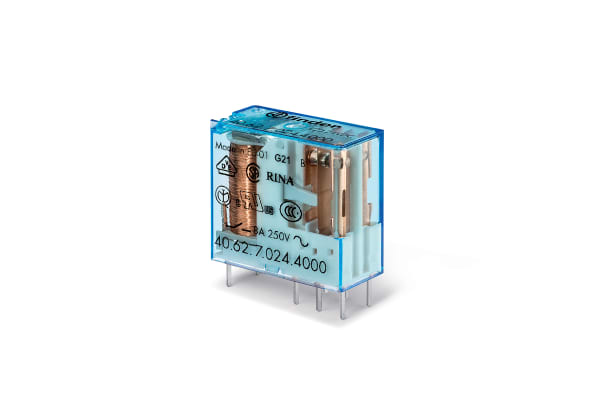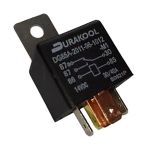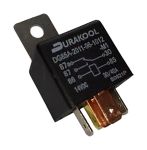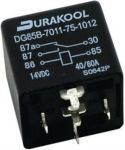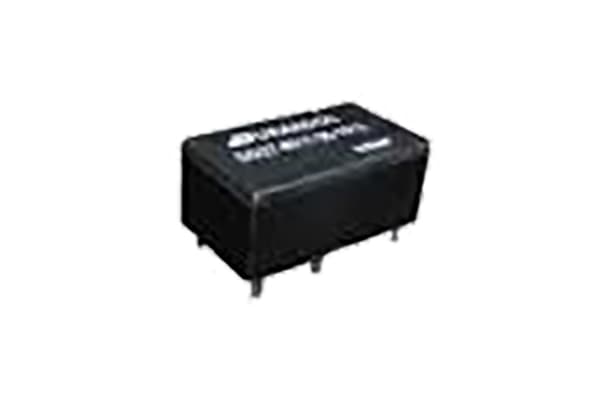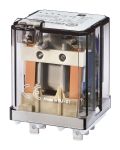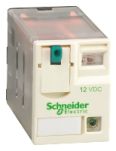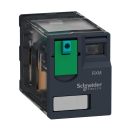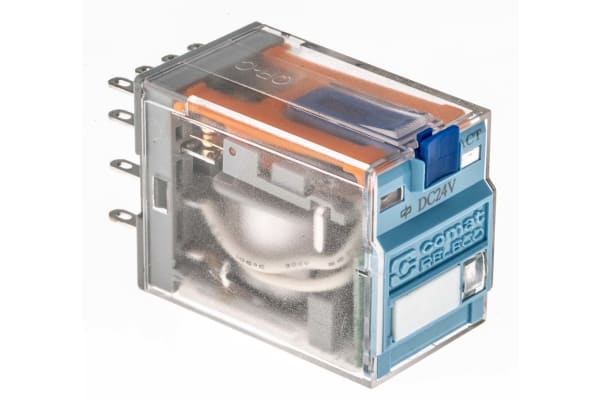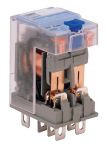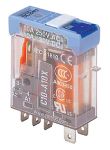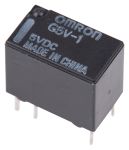Non-Latching Relays
Relays are electrical switches that are operated by electrical impulses with the primary function to open and close a circuit, they can also be referred to as industrial switches. There are 2 main types available, latching and non–latching relays.How do non-latching relays work?Non-latching relays are in a normally closed (NC) position and will stay in this state without power. When power passes through the circuit, the relay switched to a normally open (NO) position by using an internal coil to generate a magnetic force, holding this NO position. Once the current is turned off, it returns to the NC position. This makes non-latching relays well suited to push-button applications like keyboards and micro-controller input buttons.What are non-latching relays used for?Non-latching relays are highly durable and versatile components, making their performance long lasting and suitable for use in a wide range of applications, such as:Automotive enginesHousehold appliancesIndustrial machineryMedical equipmentTelecommunications equipmentWhat is the difference between latching and non-latching relays?Both types of relays in similar in design and function, however, a significant difference between them is that a latching relay will remain in the last position it when it was last powered, whereas a non-latching goes back to its normal position. This makes each more type of relay suitable for different applications. Considerations when selecting a relayWhen choosing a relay, it is important to consider a number of specifications to ensure it is fit for purpose, some factors include:Coil voltage – the required voltage to actuate the switching mechanism. If a voltage is too high this could damage the components, if it is too low then it will not actuate. Contact configuration – This is the state the contacts are in without power. For example SPST, single pole single throw.Contact material – the relay contacts are available in many materials that have certain properties. Common materials are gold, silver, tin oxide and nickel Coil power – the amount of power (watts) the coil operates at. This must match the power in the circuit for correct function. Coil resistance – the amount of resistance (ohms) in the circuit that the coil creates.
-
RS PRO, 36V Coil Non-Latching Relay 4PDT, 2A Switching Current PCB Mount, 4 Pole
IDR797,268.89 -
Finder, 24V dc Coil Non-Latching Relay DPDT, 10A Switching Current PCB Mount, 2 Pole, 40.62.7.024.4000
IDR144,643.31 -
Finder, 12V dc Coil Non-Latching Relay DPDT, 10A Switching Current PCB Mount, 2 Pole, 40.62.7.012.4000
IDR132,685.85 -
Schneider Electric, 48V ac Coil Non-Latching Relay DPST-C/O Plug In, 2 Pole, RXG23E7
IDR235,582.94 -
Schneider Electric, 48V ac Coil Non-Latching Relay DPST-C/O Plug In, 2 Pole, RXG22E7
IDR242,610.57 -
Durakool, 24V dc Coil Non-Latching Relay SPDT, 60A Switching Current Plug In Single Pole, DG85F-7011-76-1024-DR
IDR71,849.65 -
Durakool, 12V dc Coil Non-Latching Relay SPDT Plug In Single Pole, DG85C-7011-76-1012-DR
IDR68,493.17 -
Durakool, 12V dc Coil Non-Latching Relay SPDT, 40A Switching Current Plug In Single Pole, DG85A-7011-36-1012
IDR56,955.27 -
Durakool, 12V dc Coil Non-Latching Relay SPDT, 60A Switching CurrentPCB Mount Single Pole, DG85B-7011-75-1012
IDR53,074.34 -
Durakool, 12V dc Coil Non-Latching Relay SPDT Plug In Single Pole, DG56A-7011-76-1012-DR
IDR44,158.69 -
Durakool, 12V dc Coil Non-Latching Relay SPDT, 60A Switching Current PCB Mount Single Pole, DG08-7011-35-1012
IDR49,193.41 -
TE Connectivity, 12V dc Coil Automotive Relay SPNO, 300A Switching Current Flange Mount Single Pole, 1393315-2
IDR657,240.74 -
Finder, 24V dc Coil Non-Latching Relay DPDT Plug In, 2 Pole, 62.32.9.024.0040
IDR306,698.36 -
Finder, 24V dc Coil Non-Latching Relay SPST Plug In Single Pole, 62.31.9.024.4800
IDR331,452.40 -
Schneider Electric, 12V dc Coil Non-Latching Relay 4PDT, 3A Switching Current Plug In, 4 Pole, RXM4GB2JD
IDR130,378.27 -
Schneider Electric, 110V dc Coil Non-Latching Relay 3PDT, 10A Switching Current Plug In, 3 Pole, RXM3AB2FD
IDR198,137.21 -
Schneider Electric, 48V dc Coil Non-Latching Relay DPDT, 12A Switching Current Plug In, 2 Pole, RXM2AB1ED
IDR160,901.26 -
Carlo Gavazzi, 24V dc Coil Non-Latching Octal Relay DPDT, 10A Switching Current Plug In, 2 Pole, RCP800224VDC
IDR211,038.68 -
Schneider Electric, 24V dc Coil Non-Latching Relay DPDT, 5A Switching Current Plug In, 2 Pole, RXG23BD
IDR190,899.80 -
Turck, 24V dc Coil Non-Latching Relay 4PDT, 5A Switching Current Plug In, 4 Pole, C9-A41FX/024VDC
IDR570,182.04 -
Turck, 24V dc Coil Non-Latching Relay DPDT, 6A Switching Current Plug In, 2 Pole, C7-T21DX/024VDC
IDR706,014.59 -
Turck, 24V dc Coil Non-Latching Relay SPDT, 10A Switching Current Plug In Single Pole, C10-A10X/024VDC
IDR396,484.20 -
Turck, 5V dc Coil Non-Latching Relay SPDT, 10A Switching Current Plug In Single Pole, C10-A10X/005VDC
IDR423,231.15 -
Omron, 5V dc Coil Non-Latching Relay SPDT, 1A Switching Current PCB Mount Single Pole, G5V-1-DC5
IDR38,914.19




